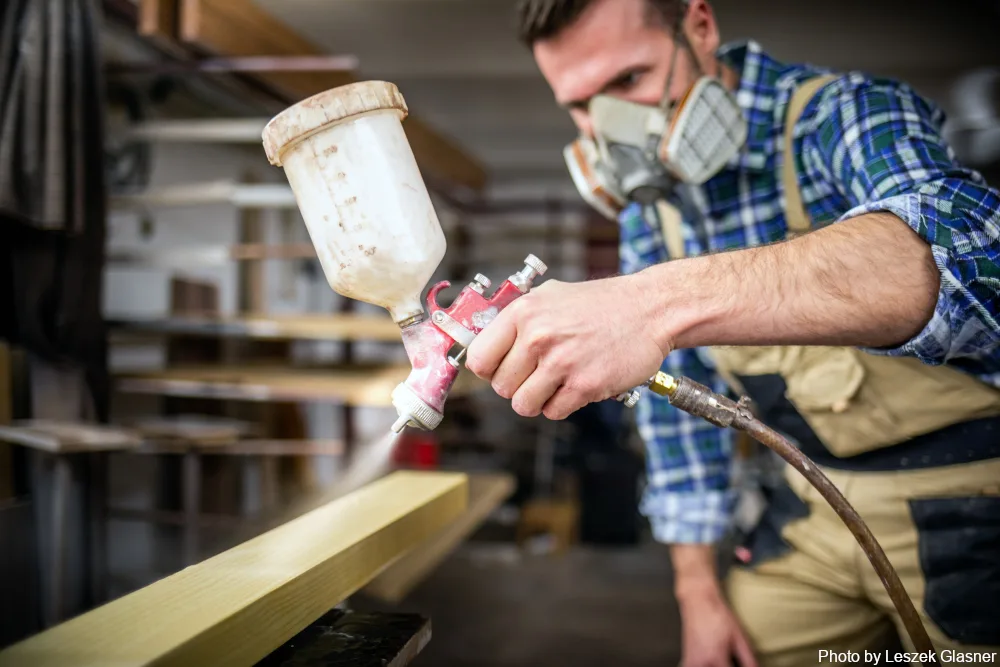As a finisher with regular contact with potentially hazardous chemicals, I hope you question the wood finishing safety differences between water based coatings and their traditional solvent based counterparts, particularly concerning their performance and their impact on your health and the environment.
In my earlier years, I underestimated the significance of these questions. But as respiratory ailments surfaced, I became acutely aware of the need to take my daily exposure to dangerous chemicals much more seriously.
This realization prompted me to conduct thorough research on ways to bolster wood finishing safety in my workshop and on job sites.
I also aimed to better understand the products I was using — I wanted to be better informed and make safer choices affecting my health and the environment.
In this article, I’ll delve into the significant health benefits and reduced environmental footprint associated with water based finishes, specifically highlighting what I learned about Target Coatings’ Emtech® products in comparison to oil and other solvent based alternatives.
While my main focus is on the well-being of spray applicators, I aim to showcase how these finishes can positively impact everyone and why opting for a water based solution is not only healthier, but also cost-effective.
Likewise, while these insights hold particular relevance for professionals navigating these environments daily, they also offer valuable guidance for weekend warriors and smaller-scale DIY enthusiasts seeking to understand and contribute to the responsible and safer application of finishes in their projects.
From one finisher to another, if you are not already doing it, it’s time to consider prioritizing health, safety, and environmental consciousness in your finishing endeavors.
Part 1 :
Tackling Overspray: A Comprehensive Look at Health, Safety, and Environmental Concerns
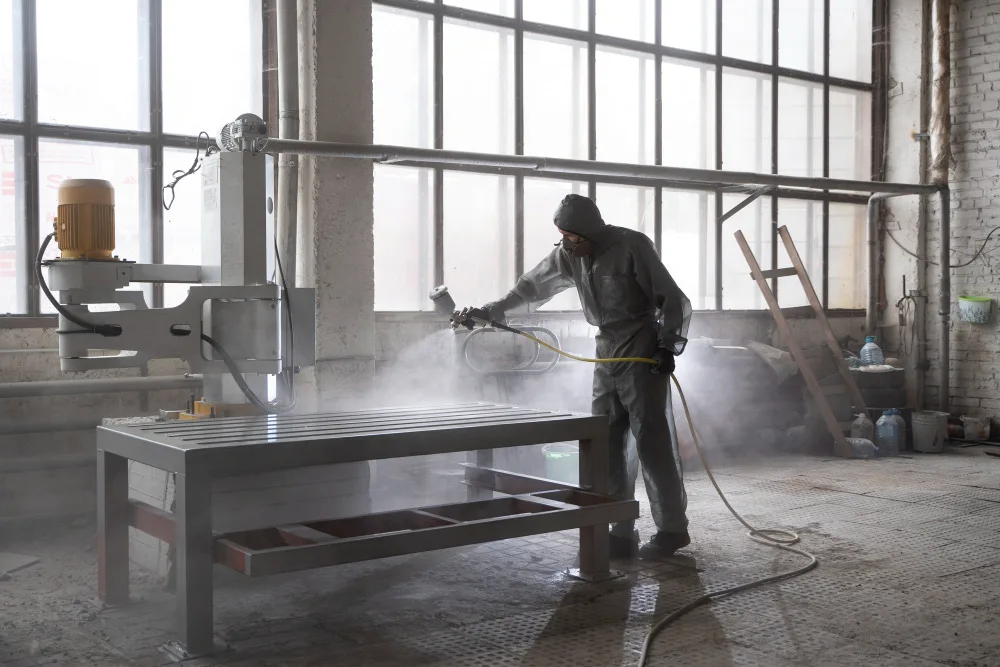
One of the main and crucial considerations in wood finishing is overspray, which is the coating expelled from a spray gun that doesn’t land on the substrate or that rebounds due to high velocity or corners.
Depending on factors such as the spray equipment being used, project type, and applicator skill, a significant 25% to 50% of your coating can end up as wasteful overspray, dispersing into the atmosphere around you.
Overspray from oil, nitrocellulose, and alcohol-based coatings poses serious risks, creating a hazardous environment both inside and outside your spray area.
The highly flammable nature of these coatings highlights the importance of taking expensive but crucial precautions like the installation of specialized explosion-proof equipment throughout your booth and shop.
Without such precautions, overspray can ignite from the smallest spark. The source of this spark could be from a small hand tool or a faulty light switch.
If that isn’t enough of a concern, consider that accumulated overspray from nitrocellulose coatings in confined spaces is regarded as the number one cause of spontaneous combustion (no spark required) of woodworking shops.

It goes without saying, the outcomes from these accidents can be severe, and most likely include property damage, personal injuries, or even loss of life.
This is why using only water based finishes can, in many cases, reduce your insurance premiums.
Additionally, the extended drying time of some of these oil- and solvent-based coatings while airborne can accelerate air filtration clogging, resulting in more landfill waste and expensive filter replacements.
The wet particles can create a sticky mess on everything in your shop, posing health risks from long term exposure if they come into contact with your skin.
In stark contrast, water based coatings are completely non-flammable, alleviating concerns about special equipment and spontaneous combustion.
They also dry more quickly in the air, simplifying cleanup and extending the lifespan of filters, especially when occasional vacuuming of filters with a shop vac is employed.
While precautions are still necessary for airborne particles, the risks are easily managed with basic filtration and ventilation as well as a properly fitting mask for the spray applicator.
What about overspray outside the booth?
Modern high-end booths can filter out a substantial percentage of solid particulates and organic vapors. However, not everyone can afford or is required to adhere to such stringent filtering standards.
In such cases, concerns arise about where the ventilation exits. Is it in a shared industrial space with nearby co-workers or neighboring tenants?
Is it in a detached garage with a nearby garden or flower bed and where children or pets can play?
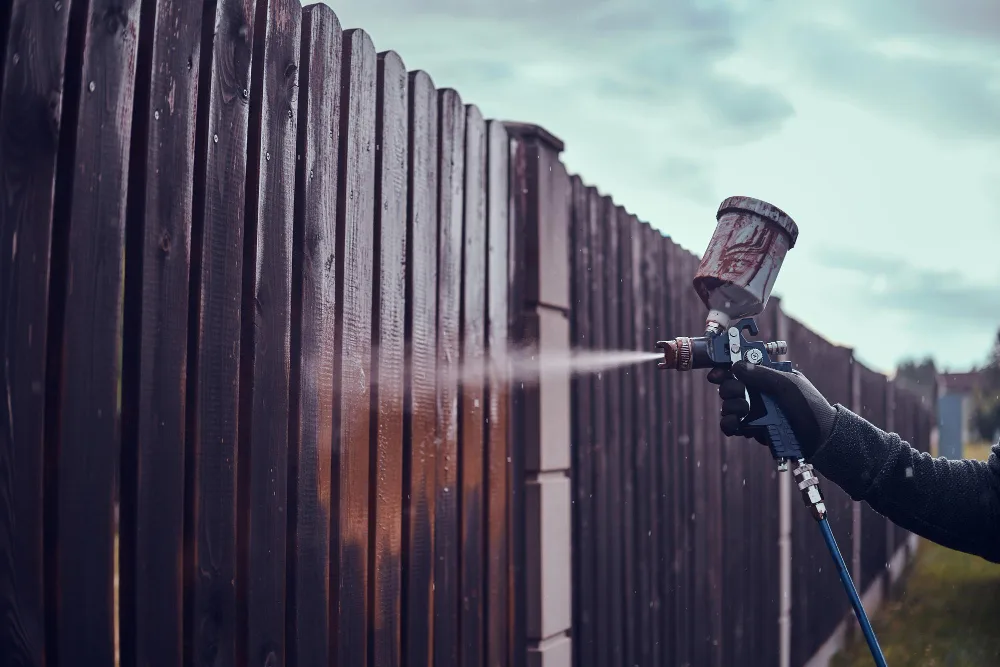
What about the savvy hobbyist finisher who, in order to avoid the problems of overspray in a contained environment, moves their spray operation outside?
Please consider that the majority of solvent based products contain hazardous air pollutants (HAPs) that can linger and contaminate the surrounding area, affecting people, pets, or plants. And remember, if you can smell it, there is the possibility you could be inhaling potentially harmful chemicals.
Additionally, any escaping overspray can settle in the area contaminating nearby grass, plants, or water supplies that you, your pets, or local wildlife could come in contact with.
Well-formulated water based coatings, particularly those offered by Target Coatings, alleviate many of these concerns by being HAPs free.
While some organic compounds may still make their way outside the booth through overspray, none of them are on a dangerous air pollutant list, providing both you and the environment outside your shop with a fresh breath of relief.
Of course, for all application methods, a mask filtering solid particulates and airborne organic vapor is highly recommended when working with water based products.
And, construction of a well-equipped spray booth that effectively filters overspray not only safeguards your health but also prevents overspray settling on your projects, minimizing additional work.
Jeff Weiss wrote great post on why wearing a mask is still advisable when applying water based products, and you can also refer to Marty Schlosser’s guide on setting up effective spray booths for professionals and hobbyists.
It’s time to approach overspray with a comprehensive strategy for a safer, healthier, and more environmentally conscious finishing process.
Part 2:
Navigating HAPs and VOC Emissions in Coating Applications
Let’s dive into the world of HAPs and VOC emissions – crucial factors when it comes to coating applications.
HAPs, short for Hazardous Air Pollutants, are substances that are either known or suspected to cause serious health issues, including cancers.
On the other hand, VOCs, or Volatile Organic Compounds, are organic chemicals and aromatics, including any HAPs, emitted as a gas during the drying process of certain liquids, posing potential health risks to those in the vicinity who are breathing in these compounds.
Here’s how it works:
As your coating dries and cures, VOCs, carrying any HAPs that are part of the formula, are released into the atmosphere – whether it’s your workshop, spray booth, a customer’s home, or the environment outside your ventilation system.

The duration and quantity of these organic compounds outgassing depends on the solvent and formula used, making the potentially dangerous part of the drying process unpredictable and hard to narrow down in terms of time frames.
When applying your coating, whether water based or another solvent, it’s wise to wear a snug mask that filters organic materials. But here’s the catch – what happens after application, when the overspray settles?
Most of us tend to drop the mask and continue with our other tasks. However, the off-gassing of organic compounds persists beyond this initial application stage, affecting not only the applicator but also nearby workers or customers during the drying and curing process.

Let’s talk about differences. Even solvent based formulations that meet EPA standards can harbor high levels of hazardous compounds. Take a popular nitrocellulose brand, for instance, with a low formulation at 375 grams/liter and HAPs at 0.8 lbs per 1 lb of solids.
Now, compare that with EM6000 Production Lacquer, boasting an ultra-low formulation at 41 grams/liter and absolutely Zero HAPs. The contrast is stark.
A commonly used conversion varnish hits 350 grams/liter and 0.43 lb of HAPs per 1 lb of solids, while EM8000 Conversion Varnish comes in at 40 grams/liter, and also completely HAPs free.
Why are these differences significant? Well, during the drying and curing stages, when applicators and those in proximity may be inhaling organic compounds, these distinctions carry weight.
For instance, when contrasting the products in the previous paragraph, there’s a noteworthy 80-90% decrease in overall VOC emissions with the use of Emtech® coatings.
To put it into perspective, if you spent 10 hours working with a traditional oil or solvent based coating at the same time potentially inhaling 25-50 lbs. of HAPs, choosing Target Coatings products could mean the VOC emission equivalent of working for 100 hours and without any potential exposure to HAPs.
Also, consider that traditional oil and solvent based coatings can take several hours, and sometimes days, for this off-gassing of harmful VOCs and HAPs to complete. In contrast, Emtech® water based finishes often outgas between 80-95% of their HAPs free organic compounds within the initial dry to touch phase, depending on the formula.
Coupled with the proper ventilation, these ultra-low VOC and HAPs-free coatings can make a substantial difference, not just for the applicator’s health, but for everyone exposed to the drying process and its accompanying smell.
I encourage you to broaden your perspective beyond the next job or spray session and consider the scale in a larger context. Doing so can help you make choices that will have a more positive impact on both your health and the environment.
Part 3:
Cleanup: The Overlooked Process with Hidden Costs
Let’s focus on cleanup because there are crucial aspects of this process that often get overlooked.
Some finishers might relax their guard when it comes to cleaning up traditional oil and solvent based products, but the chemicals necessary for cleanup are inherently hazardous, and the cleaning process itself demands a high level of caution.
Just as you gear up with eye protection, gloves, and a mask while applying the finish, the same level of care should extend to the cleanup phase.
Don’t forget, the chemicals for cleaning have their own HAPs and VOCs leading to harmful organic vapors from these solvents gassing off as you’re cleaning your tools.
Absorption of these dangerous chemicals through the skin is a real concern, leading to potential skin disorders and even various cancers with prolonged exposure.
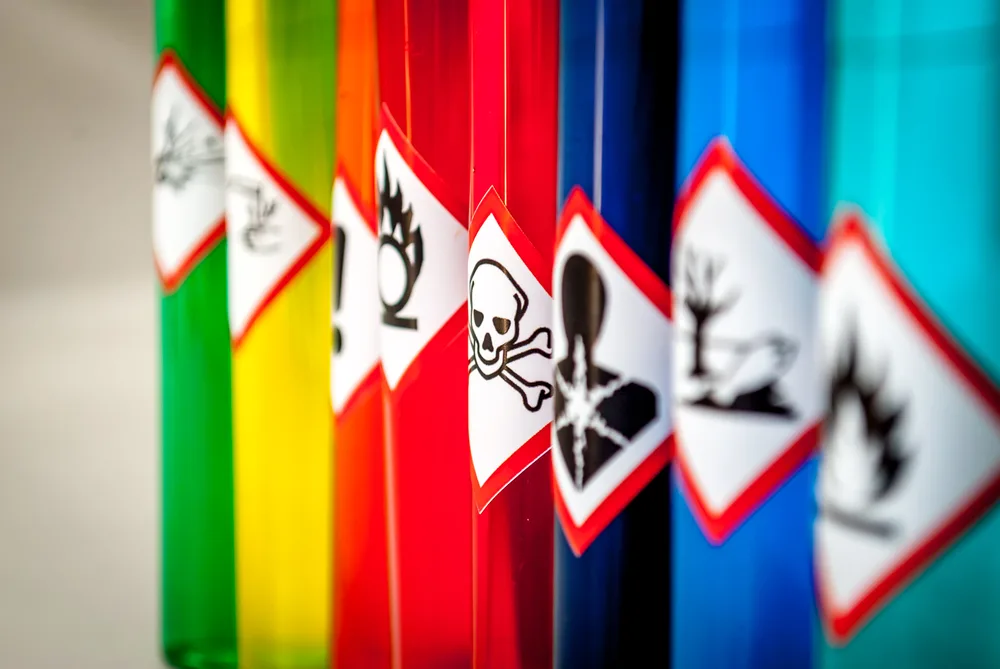
The cleanup process doesn’t stop there. What’s the plan for those tainted cleaning solvents? While it’s common to reuse them, they inevitably reach a point where they’re too contaminated for effective cleaning.
Some professionals may try turning them into paint thinners, but there isn’t always the need or opportunity for this solution. You can’t just casually dispose of them down the drain or in the yard or street.
Not only is it against the law, but do you really want your conscience to be weighed down with the responsibility of contaminating soil and water supplies for both your generation and those to come?
What remains is the challenge of managing the risks and costs associated with storing and properly disposing of these cleaning chemicals.
Now, let’s contrast this with the cleanup of Emtech® water-based coatings — a simple task requiring warm water and maybe a mild degreasing soap to expedite the process.
With basic maintenance after each use, a professional finisher can bid farewell to hazardous solvents. A quick rinse in the scrub sink, maybe the occasional run of alcohol through the line for drying, and you’re done — no need to stress.
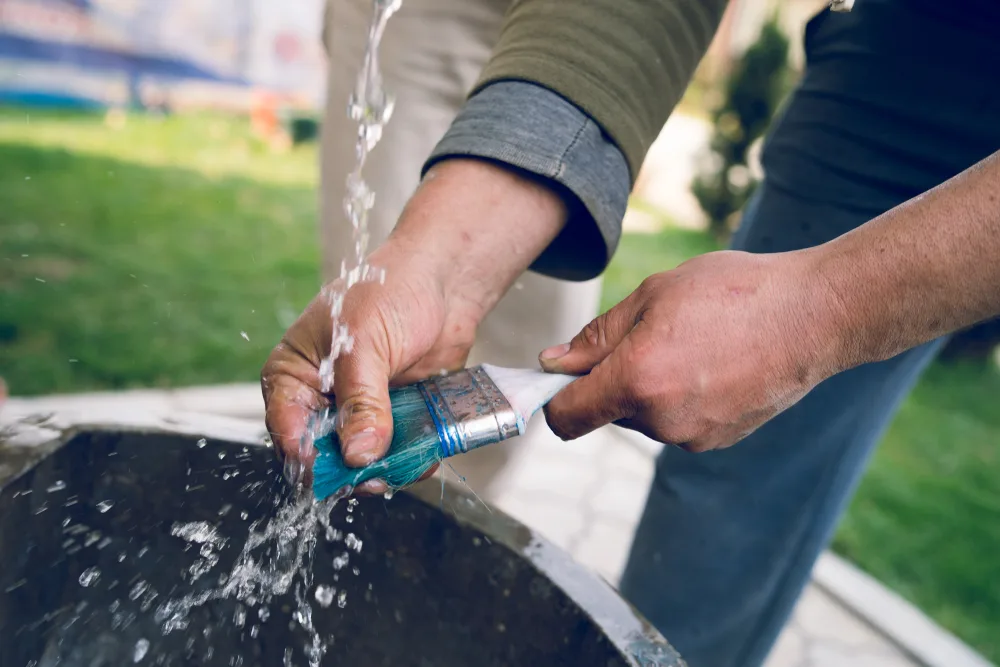
Think about the implications — not just for your health but also your time and money. Water for cleanup is essentially free, while chemical solvents can, literally and figuratively, burn a hole in your pocket. Moreover, water is non-toxic, non-flammable, and requires no special storage.
Consider the simplicity of cleaning tools other than spray equipment. That brush for touch-ups, tipping off, or cleanup? Rinse it with soap and warm water.
What about the strainers you use for your spray application? Forget about the waste and cost of purchasing disposable strainers; purchase a reusable strainer and a quick rinse can make it last for years. The perks are evident – a healthier you, a happier environment, and a thicker wallet.
In conclusion, I advocate for water based coatings, like those you can purchase from Target Coatings, not just for the many financial benefits but more importantly for the long-term well-being of professional finishers.
I would even argue it’s not just about the finisher; it extends to co-workers, family, and customers.
There’s a real and urgent need to consider the health impacts of constant exposure to harmful chemicals. Beyond the potential savings from cleaning solvents, specialized equipment, and the protocols you need to put in place to adequately protect yourself, you need to consider that short-term discomforts like headaches and minor respiratory issues now can escalate into substantial medical bills and complications down the road.
I don’t want to completely downplay the precautions necessary for water based finishes, but when you weigh them against the hazards of traditional oil and solvent coatings, the choice for your health and safety becomes clear – there’s a simpler, healthier, and more sustainable solution.
If you want to read more about the practical applications of using a water based finish vs. traditional oil and solvent finishes, consider reading the following articles:
The Ultimate Guide to Water Based Polyurethane vs. Oil Based Polyurethane
Water Based Polyurethane: The Best Choice for Your Project
A Water-Based Lacquer? Making Sense of the Confusion
Do you have any comments, questions or experiences regarding wood finishing safety for the finishing products and processes you’re using?
Please share your thoughts or read what others are saying below in the comments section.
Seth Kline has been a woodworker, wood finisher and business owner for the past 25 years. After helping grow his family’s home remodeling firm — Roy B Kline & Son — both as a craftsman and business operator, in 2013 Seth became the co-owner, lead woodworker, and shop manager of Stor Handmade Furniture, a highly successful solid wood furniture shop specializing in bespoke, hand-made and hand-finished pieces. In 2023, Seth launched SBCraftsman, which offers spray finishing and small business consulting to private clients. Originally from Pennsylvania, Seth now resides in Aberdeen, N.J., and is a proud member of the Central Jersey Woodworkers Association.

